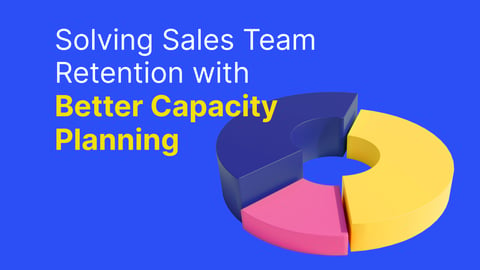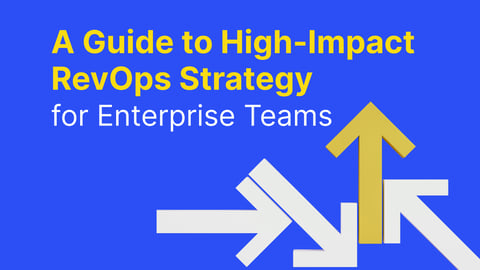A study in the Harvard Business Review showed that only 37% of businesses responded within an hour and that the average time was 42 hours, almost 2-days!
And if you combine that with other lead response time stats, like from LeadSource saying that calling a prospect within 5 minutes is 21x more effective than calling after 30-minutes, or another study that found 50% of leads go with the vendor that responds first – it’s pretty clear that lead response time is something you need to optimize.
To improve lead response time, you need to measure and manage it. In this blog, we’re going to focus on that first step, and to calculate lead response time in Salesforce you need two data points:
-
The date and time when the lead was Assigned
-
The date and time when the lead received it’s first sales touchpoint since it was Assigned
Assigned Date
The first data point you’ll need to calculate lead response time in Salesforce is the timestamp of when the lead was Assigned. But what does Assigned mean?
When a lead is Assigned, it has the expectation that a sales rep is going to start actively working them with the goal of getting a meeting booked. Based on how your company has Salesforce setup, you could be working a lead, contact, or account – but to keep things simple in this blog we’ll refer to them as leads.
A lead may be Assigned when:
- They hit a lead score from behavior or demographic data
- They perform a specific action like requesting a demo
- They are pulled out of an outbound queue, such as a list from a tradeshow or recycled leads
- They are a member of a target account who meets one of the criteria above
Once a lead is triggered to be Assigned, they should enter a dedicated lead stage. For companies using The Measurable Lead Model, this stage is appropriately named Assigned, while companies using a waterfall model would call it MQL, and companies using an account-based model would call it Target Account.
Whatever that stage is called in your organization, once a lead enters, there is a clear obligation for action onto the sales rep it is assigned to. Once the lead enters the Assigned stage, it starts a clock and from here you begin measuring lead response time in Salesforce.
To do that, you’ll need to stamp the date and time that the lead moves to the Assigned Stage – that is what we’ll call the Assigned Date.
First sales touchpoint since the Assigned Date
The next and final data point you’ll need to calculate lead response time in Salesforce is the timestamp of when the lead receives it’s first sales touchpoint since it was Assigned.
Once the lead receives it’s first sales touchpoint since the Assigned Date, the lead should leave the Assigned Stage and moved to a new one – we’ll call that stage Working, and the goal is now to get the prospect into a meeting.
When the lead moves from Assigned to Working, the clock stops and you now have the two data points you need to calculate lead response time in Salesforce.
Calculating lead response time
How to calculate lead response time in Salesforce:
Lead response time is how many minutes, hours, or days have passed from when the lead is Assigned to a sales rep to when they log their first sales touchpoint in Salesforce.
What is a good response time?
There are countless studies that tell us that faster lead response times lead to more qualified leads, improved conversion rates, and an increase in revenue.
A common stat thrown around is a 5-minute lead response time target, which is great, but extremely unrealistic for the vast majority of businesses. What if the sales rep is in a meeting, on a call, or just going to the bathroom? A 5-minute lead response time target also encourages a spray and pray type of response where your sales reps aren’t likely to have the time to research, qualify, and personalize a response – all qualities that are also proven to increase conversion rates.
That’s why we recommend a 2-hour target for inbound lead response. It gives sales reps enough time to respond to each prospect in a quality way while also factoring in a bit of a time cushion knowing that the day of a typical sales rep is a busy one that has calls, meetings, and other tasks come up that also need to be dealt with.
Is calculating lead response time in Salesforce that easy?
Nope.
Like almost anything that has to do with tools and sales performance measurement, it’s never as easy as it sounds.
When it comes to calculating lead response time in Salesforce, there are two main things that complicate things:
-
Business hours
-
Automated touchpoints to the prospect
Should you include business hours in your lead response time calculation?
Many sales organizations choose to keep their lead response time calculation within normal business hours, and on the surface it makes sense.
When a sales rep is working 9 AM – 5 PM, how can you hold them accountable to a lead response time if they’re not working when a lead comes in? They could be sleeping, they could be out for dinner, or they could just be at home enjoying their time off. It doesn’t seem fair to expect them to be working 24/7.
It’s true, but let’s dig deeper into why we’re calculating lead response time in the first place.
We want to measure and calculate lead response time to create a measurable improvement in the customer experience that drives better conversion to revenue. So if a lead comes in at 6 PM, does all of that get thrown out the window?
Let’s explore how using business hours in how you calculate lead response time in Salesforce could influence sales rep behavior.
Scenario:
- Sales reps have a performance target of 2-hours to respond to a lead
- Business hours are 9 AM – 5 PM, Monday to Friday
- A lead comes in at 4 PM
- The first sales touchpoint is logged in Salesforce at 10 AM the next day
Calculating lead response time:
- With business hours, that’s a 2-hour lead response time, good work sales rep!
- Without business hours, it has been 18 hours. And if this example happened on a Friday, it would have been 66 hours until the prospect finally heard from you on Monday morning!

As a sales organization, if you measure in actual hours, the likelihood of your sales reps working that lead would increase substantially.
Now there are some instances where leads will be missed and you’ll have a lead response time of 8, 10, 12-hours. Everyone has to sleep and everyone has their life to live outside of work. If the amount of leads coming in after-hours is high enough to skew lead response times in a dramatic way, it’s time to start managing after-hour leads.
This seems like a big thing to do, but it all comes back to why we are calculating lead response time in the first place – to create a measurable improvement in the customer experience that drives better conversion to revenue.
If the after-hour lead volume is substantial enough to skew your lead response time metrics, and you believe that getting back to prospects fast makes an impact on your ability to generate revenue, you need to have a dedicated team. This is particularly important if you service markets across time zones and have a centrally located sales organization.
Remove automated touchpoint from your lead response time calculation
Optimizing your prospect experience with automation is great, but they can mess with your lead response time in Salesforce and make it look like your sales reps are doing a better job than reality.
Every company in today’s world has some sort of automated messaging going out – whether it’s an automatic email through a sales engagement tools like Salesloft or Outreach after a website form fill or a bi-weekly newsletter that is sent to everyone in the email database.
The issue with automated sales touchpoints comes when they are sent to leads in the Assigned Stage and move them to the Working Stage. If you count automated touchpoints as a first sales touchpoint, you run the risk of sales reps not seeing all of their Assigned leads.
Remember why you’re calculating lead response time
We’ll go back to it one more time, the reason we calculate lead response time is to create a measurable improvement in the customer experience that drives better conversion to revenue.
How we calculate lead response time in Salesforce is simple:
But it’s never that easy. You’ve got things like business hours and automated touchpoints to think about and create solutions for inside of Salesforce. It’s added work, and your sales reps might not like it, but it’s the best way to measure lead response time and create measurable improvement in the customer experience.
Calculate lead response time automatically
Varicent Lift's revenue intelligence makes lead response management easy with out-of-the-box reporting on lead response time as well as lead pick-up rate and cadence metrics for tools like Salesloft or Outreach with real-time alerts to keep sales reps accountable.




